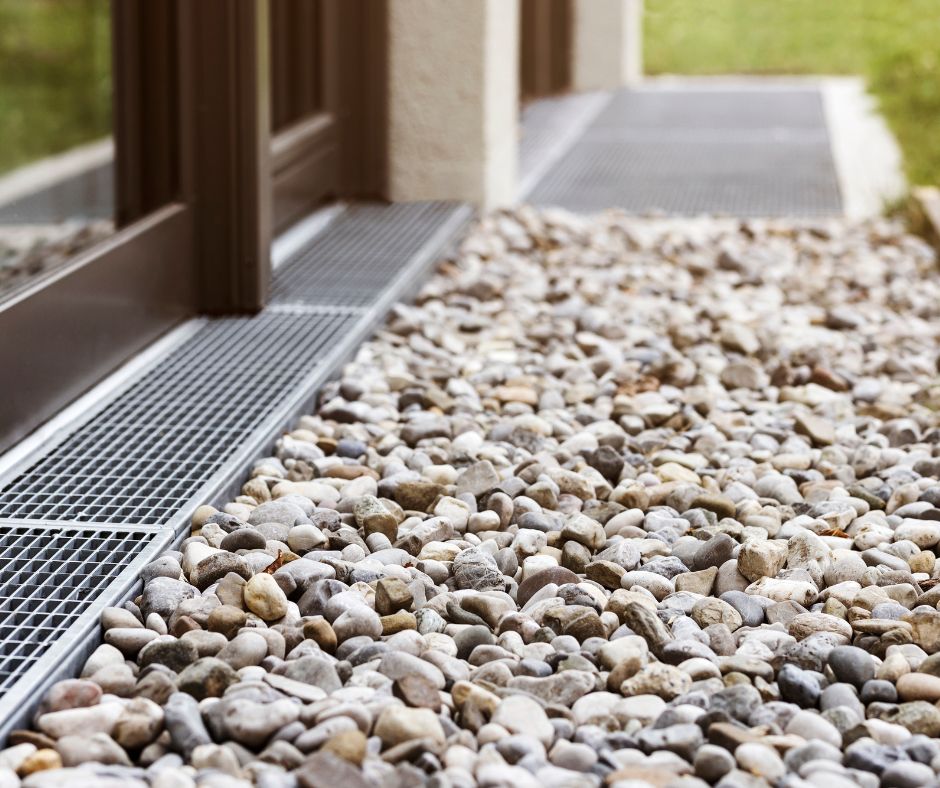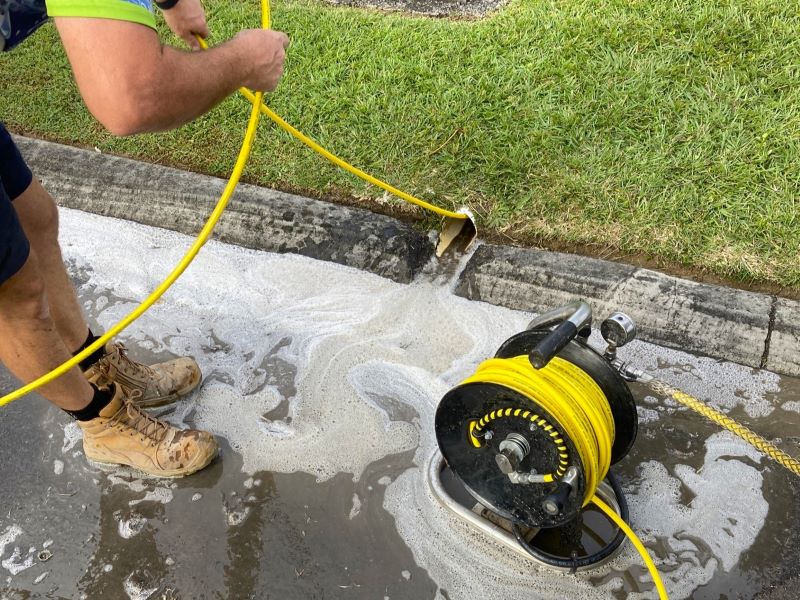Stormwater drainage systems are crucial infrastructures that encompass a variety of components such as roof plumbing drainage, French drains, spoon drains, and strip drains. These systems are instrumental in averting water damage to your property while effectively managing stormwater runoff. Regular maintenance is essential, as neglecting these systems can lead to severe repercussions like drain blockages and potential flooding. Whether you’re facing issues like clogged grates, root invasions in your pipes, or damaged plumbing systems, engaging in proactive maintenance can drastically reduce the risk of future complications and costly repairs. Understanding how to maintain these systems is vital for safeguarding your home and preserving its value.
This comprehensive guide delves into effective strategies for maintaining your drainage systems and outlines actionable steps to take in the event of a blockage.

Effective Strategies to Maintain Traditional Stormwater Drains
Traditional stormwater drains are vital for most properties, as they divert rainwater away from structures to prevent potential flooding. However, over time, these systems can become obstructed by various debris such as leaves, dirt, and branches, which can significantly impair their performance. To ensure that water flows freely and does not accumulate near your home’s foundation—potentially causing serious structural issues—consistent maintenance is paramount. By setting up a regular upkeep routine, you can extend the longevity of your drainage systems and enhance their efficiency, especially during periods of heavy rainfall when they are most needed.
Essential Tips for Caring for Traditional Drains:
- Regularly clear the grates and gutters: Prevent water flow obstructions by routinely removing accumulated leaves and debris, particularly after storms when buildup is most likely to occur.
- Monitor for pooling water: Remain vigilant for signs of water backing up or pooling near your drains, as these may signal a blockage. Additionally, inspect for soggy patches in your garden, which could indicate underlying drainage problems requiring prompt attention.
- Engage professional services: Scheduling regular inspections and cleanings with a qualified plumber, such as Creek to Coast, ensures that your drains operate at peak performance and helps you avoid future complications.
Best Practices for Maintaining French Drains
French drains are engineered to effectively redirect groundwater away from your home and retaining walls, making them essential for effective moisture management. However, these underground systems require continuous care to prevent blockages. Comprised of gravel and a perforated pipe, French drains facilitate efficient water diversion, but they can become clogged with dirt, sediment, and even invasive roots over time. Proper maintenance is crucial to ensure their longevity and operational efficiency, helping to avoid issues that could lead to expensive repairs down the line.
Key Maintenance Tips for French Drains:
- Watch for slow drainage: If water is not draining as it should, this may indicate a clog that requires immediate attention to prevent further complications.
- Regularly flush the system: Periodic flushing with water can help clear away potential blockages before they escalate into severe issues that disrupt drainage.
- Seek professional cleaning services: If you notice sediment buildup or root intrusion, contact Creek to Coast for thorough cleaning, potentially utilizing hydro-jetting tools to effectively clear the pipes or inspection points.
Essential Guidelines for Maintaining Spoon Drains
Spoon drains feature shallow, curved channels specifically designed to guide surface water away from driveways, patios, and other paved surfaces efficiently. While they typically require minimal upkeep, it remains crucial to attend to them regularly to prevent clogging. Failure to clear these channels can lead to water pooling on your property, resulting in potential damage over time. By establishing simple maintenance habits, you can ensure that your spoon drains remain functional and effective.
Maintenance Guidelines for Spoon Drains:
- Keep the channel debris-free: Regularly sweeping out leaves, dirt, and other materials will help maintain smooth water flow. A high-pressure washer can be especially effective for thorough cleaning.
- Check the slope: Ensure the slope of the spoon drain is intact and functioning as intended, as gravity plays a vital role in directing water away efficiently.
- Inspect for damage: Regularly check the drain for cracks or breaks, as they can be compromised by vehicle traffic and may require timely repair.
- Seek professional evaluation: If you notice poor drainage, it may be time to call Creek to Coast for a professional assessment to make necessary adjustments or repairs to restore optimal function.
Vital Steps for Maintaining Linear Drains
Linear drains, also known as trench drains, are strategically installed in areas like driveways and pool decks to capture surface runoff effectively. While they are adept at preventing water accumulation, they can collect debris over time, necessitating regular cleaning to maintain their efficiency. Establishing a consistent cleaning routine is essential to prevent blockages that can lead to water pooling and damage in surrounding areas, thereby ensuring both performance and longevity.
Maintenance Tips for Linear Drains:
- Frequently clean the grates: Regularly monitor the grates for any buildup of dirt, leaves, or debris that could obstruct flow and remove these blockages as needed.
- Regularly flush the system: Running water through the drain routinely will help ensure it flows correctly and that no blockages are present.
- Consider professional maintenance: If you encounter backups or slow drainage, don’t hesitate to reach out to Creek to Coast for expert cleaning services to remove deep clogs and debris effectively.
Immediate Actions for Addressing Blocked Drains
Despite your diligent maintenance efforts, blockages can still occur in any drainage system. Signs such as water pooling, slow drainage, or overflowing grates indicate that immediate action is necessary to avert more severe complications. By understanding the common causes of blockages, you can identify the issue and take appropriate measures to resolve it effectively.
Common Causes of Blockages Include:
- Tree roots: Roots can invade underground pipes, creating significant blockages that disrupt water flow and drainage.
- Accumulated debris: Leaves, dirt, and other environmental materials can build up over time, obstructing water passage through your drainage system.
- Pipe damage: Broken or crushed pipes can severely restrict water flow, necessitating immediate professional intervention to resolve.
When faced with a blockage, it is advisable to consult a professional plumber like Creek to Coast. They utilize advanced tools, such as high-pressure water jetters and CCTV cameras, to accurately diagnose and resolve the issue. Attempting to clear a blockage on your own can exacerbate the situation, particularly if the pipes are damaged or roots have infiltrated the system.

Comprehensive Maintenance Strategies for Your Stormwater Drain Systems
To ensure your stormwater management systems—whether they are traditional, French, spoon, or linear drains—continue to function effectively, consider implementing the following comprehensive strategies:
- Schedule annual inspections and cleanings with a licensed plumber like Creek to Coast. This proactive approach helps to remove debris and identify potential problems before they escalate into major issues.
- Monitor water flow: After heavy rainfall, inspect your drains for pooling or slow drainage, which could indicate underlying issues that need addressing.
- Install gutter guards and grates to prevent larger debris from entering your drains, thereby reducing the frequency of blockages and maintenance needs.
- Maintain distance from plants and trees: Roots from nearby trees can invade and obstruct pipes, making it essential to keep vegetation at a safe distance from your stormwater systems.
Regular plumbing maintenance and prompt responses to drainage issues are critical for safeguarding your property from water damage and ensuring your drainage systems operate smoothly and efficiently. If you notice any signs of blockage, don’t hesitate to contact Creek to Coast for expert assistance in keeping your stormwater drains flowing seamlessly!
The Article: Stormwater Clarity: Essential Drain Maintenance Tips first appeared on https://writebuff.com.
The Article Drain Maintenance Tips for Stormwater Clarity Was Found On https://limitsofstrategy.com




Comments are closed